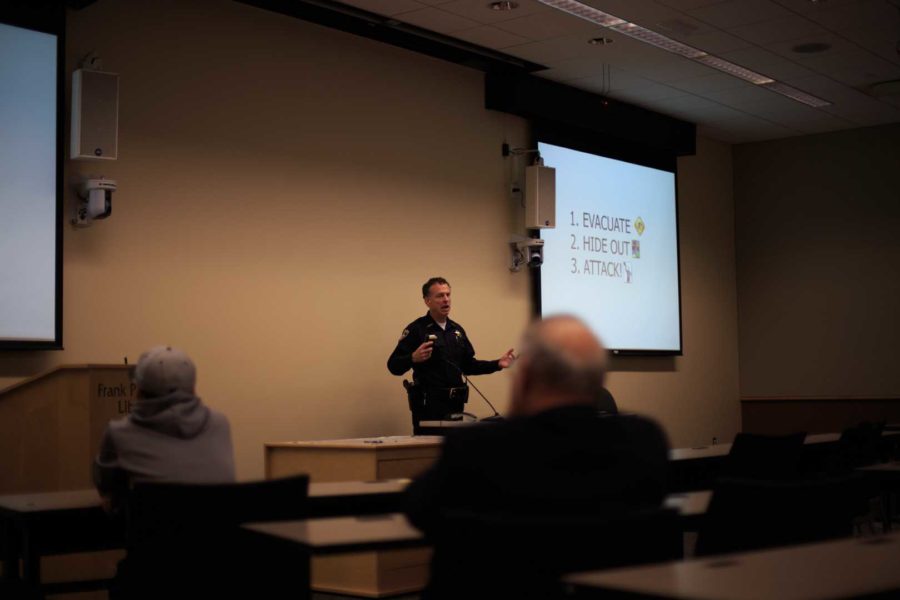Imagine for a moment that you are in class and you hear gunshots nearby. What would you do? Would you lock the door and hide? Would you risk it and try to make a break for it?
Santa Rosa Junior College held a series of presentations on how to survive active shooter situations on Feb 5th in Doyle Library. Ho SRJC Police Chief Matt McCaffery hosted the presentations to educate both students and faculty on what to do if such a situation ever occurred on campus.
Unfortunately, the likelihood of a shooting happening close to home is becoming more and more prevalent. In January 2014, there were 11 school shootings in the United States. Last year, there were over 30 shootings. Compared to incidents in the past, the number of school shootings has doubled, if not tripled over the past few years. While this might be a hard reality for some to swallow, the numbers show that shootings have been on the rise.
So what do you do if you’re caught in the middle of an active shooter situation? First, you should try to evacuate. Run if there is a good chance of getting away unharmed. Don’t bring your belongings with you. They will weigh you down and make you slower. Help others along the way, if possible. Once you’ve made it out safely, call 911, give any details that you can. Also, don’t assume that someone else has already called 911; make sure to call as soon as you are out of harm’s way.
If you can’t run, hide out. Find a safe and secure place to take cover where the active shooter will be less likely to spot you. If you are taking cover in a classroom with others, blockade the door and make sure it cannot be opened from the outside. Once you have found a good hiding spot, stay put until help arrives.
The third and final option is to take action against the shooter and attack them. This works best if you are in a group. Make a plan and when the opportunity presents itself, overpower them. Chief McCaffery recommended throwing items such as books or bags as well as using improvised weapons to disable them. This may be a last resort but if done correctly, the shooter will be subdued and many more lives may be saved.
However, McCaffery emphasized that there is not one fail-safe alternative for dealing with an active shooter. “Ultimately, we all have responsibility for our own safety,” he said.
What works for one person may not work for another; depending on your proximity to the shooter and your specific situation, you must make the judgment call on what you are going to do. He encouraged the faculty to know the building they work in and to create an emergency exit strategy if such a situation were to arise. He added that SRJC has been looking into preventative technologies such as the HydraLock, which are nylon straps used to seal doors shut to prevent intruders from entering.
Though a situation involving an active shooter close to home may be unnerving to think about, the possibility still exists. It is important that we all acknowledge the possibility and be prepared if a situation were to arise.
While there may not be any more active shooter lectures in the future, McCaffery recommended that anyone wanting more information can visit www.santarosa.edu/police, where you can find the official Dept. of Homeland Security’s Guide to Active Shooters.


